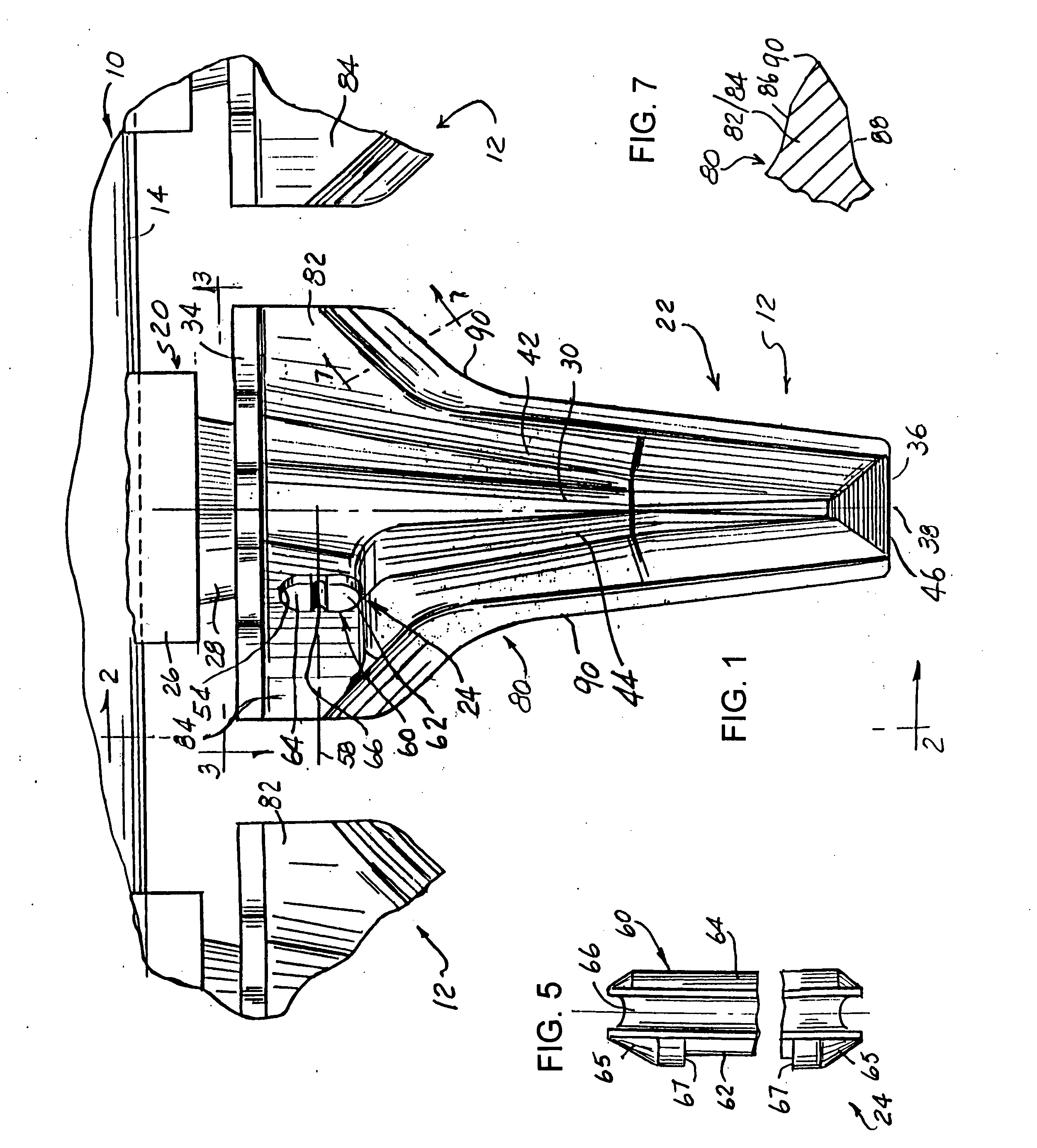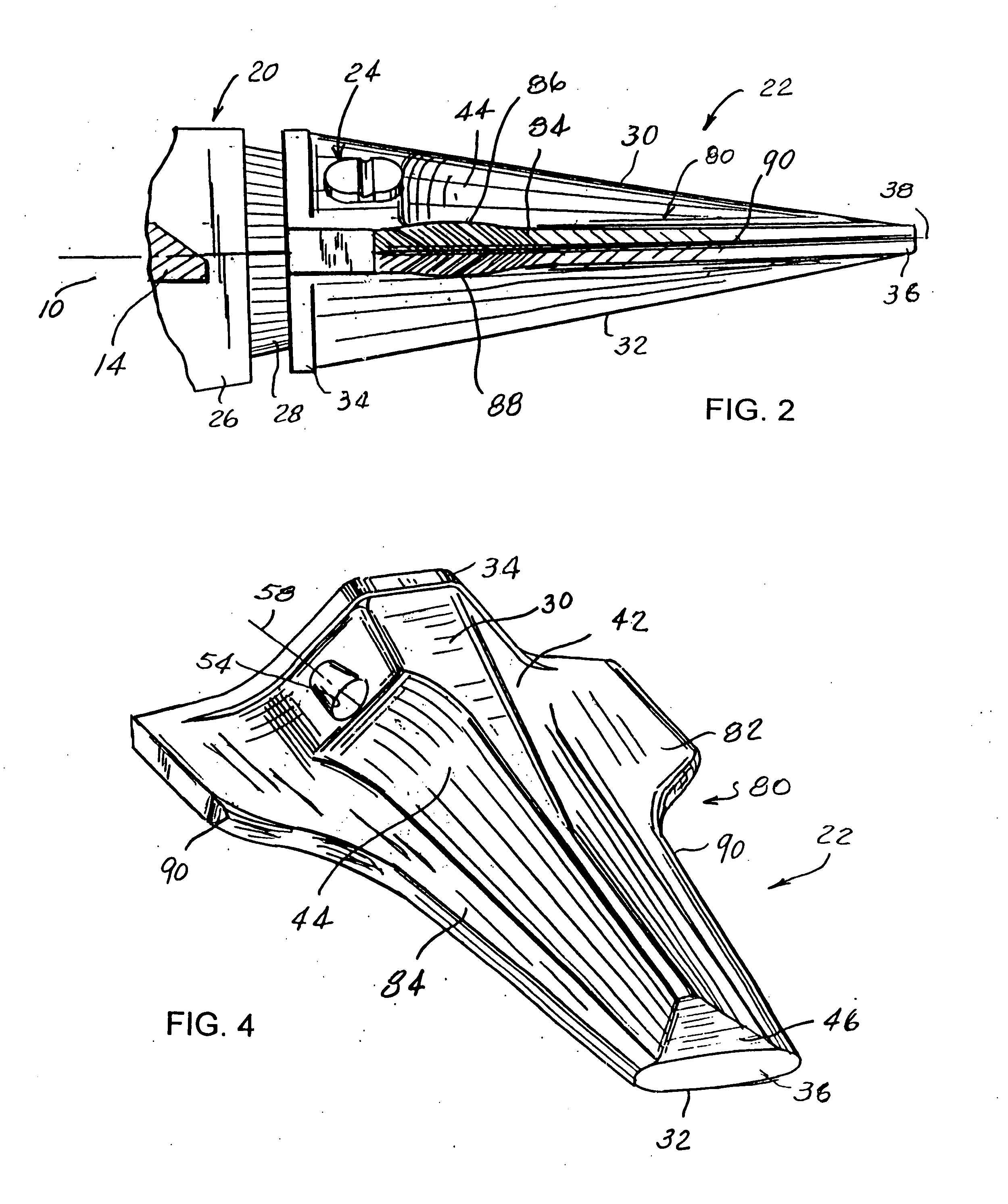Winged digging tooth
- Summary
- Abstract
- Description
- Claims
- Application Information
AI Technical Summary
Benefits of technology
Problems solved by technology
Method used
Image
Examples
Embodiment Construction
[0084] The present invention is susceptible of embodiment in multiple forms and there is shown in the drawings and will hereinafter be described various embodiments of the invention, with the understanding the present disclosure sets forth exemplifications of the invention which are not intended to limit the invention to the specific embodiments illustrated and described.
[0085] Referring now to the drawings, wherein like reference numerals indicate like parts throughout the several views, there is shown a ground engaging implement, such as a bucket or the like, generally indicated by numeral 10, with a series of digging tooth assemblies 12 arranged in side-by-side relation relative to each other. Bucket 10 is of the type commonly arranged in combination with a backhoe, front loader, excavator or related earth working implement. As shown, bucket 10 includes a base edge or lip 14 extending across and typically welded to the remainder of the bucket 10. As will be appreciated, the lead...
PUM
 Login to View More
Login to View More Abstract
Description
Claims
Application Information
 Login to View More
Login to View More - R&D
- Intellectual Property
- Life Sciences
- Materials
- Tech Scout
- Unparalleled Data Quality
- Higher Quality Content
- 60% Fewer Hallucinations
Browse by: Latest US Patents, China's latest patents, Technical Efficacy Thesaurus, Application Domain, Technology Topic, Popular Technical Reports.
© 2025 PatSnap. All rights reserved.Legal|Privacy policy|Modern Slavery Act Transparency Statement|Sitemap|About US| Contact US: help@patsnap.com



